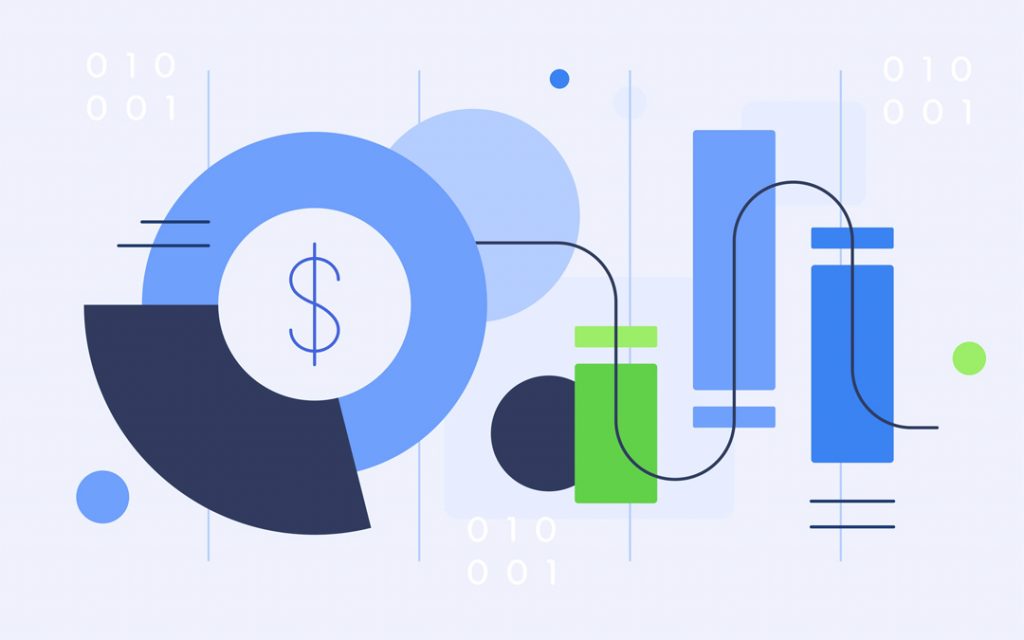On their way to the improvement, every modern business, in a faster or slower way, is undergoing digital transformation. It’s the talk of the town, but ‘what is it?’, ‘why is it necessary?’, ‘how difficult is this path?’, and ‘what are its consequences?’ are the questions arising in the mind of those who haven’t initiated this process in their company yet. Let’s try to puzzle it out.
The Essence of Digital Transformation
First of all, it’s necessary to comprehend the basis of digital transformation. There are a number of terms that can be easily confused: digitization, digitalization, and digital transformation. The thing in common is that they all are aimed to bring new advantages for a company by implementing new-generation technologies and create services to make clients’ experience better [1].
Digitization
When we talk about digitization, we mean the process of putting analog data into a code that can be easily processed by a computer. The difference is that processes are not digitized. Digitization covers only information.
Digitalization
Digitalization refers more to customers and social life rather than data. It’s about making their lives easier and more convenient when using your services. It’s what makes the processes and data transparent.
Read more: Transparency as a Cornerstone for Successful Multi-Project Management
Digital Transformation
Digital transformation involves both processes: digitization and digitalization. It’s a series of actions that should be taken to reach the goal. If digitalization can be implemented as a number of projects to complete, digital transformation involves a list of digitalization processes to implement.
Why Is Digital Transformation a Must for Finance Field?

Competition
Competition is a driving force of any business. It’s what makes us improve our service and strive for the ideal. And similar to any other field, it’s crucial for the banking industry: why a client will choose your bank if another one has better online services with all other things being equal?
Clients’ Comfort
It’s about competition as well. To have new customers and to make current ones completely satisfied with your services, you should do your best to create the conditions that other companies can’t. And it can be easily achieved with digital transformation as it opens up a lot of opportunities for both of you.
Speed of Operations
It covers not only the pace of your business and the quality of your service but also your employees’ comfort and capacity. Digital transformation will make your employees execute their duties faster and more effectively.
Reliability
Any sphere that includes manual work can’t avoid the human factor. It’s about mistakes any person can make for many reasons: inattentiveness, private issues, bad health, etc. Digital tools can prevent your business from it.
Protection from Fraudulent Activity
This is a two-sided story: digital transformation can defend you against fraudulent actions because your clients’ and your data will be reliably stored and secured but at the same time virtual fraud is developing day by day. So, to keep your information safe, you should keep pace with the latest trends in the cybersecurity field.
Digital Transformation Tendencies in FinTech
AI
Artificial intelligence is becoming a trend in Finance’s digital transformation journey. With its help, not only detecting frauds has become possible but also the use of AI-driven bots that help you make the best investment decisions, as well as algorithmic trading, model validation, market impact analysis, portfolio composition and optimisation, and even more. AI has especially great potential in the following finance fields: anti-money laundering, fraud detection, personalised financial planning, and process automation [2]. Today Fintech companies invest a lot of money into the development of AI.
Blockchain
Everyone has heard about cryptocurrencies and blockchain. But blockchain is not only about bitcoins. It’s a system that makes it possible to carry out transactions quickly and safely by eliminating risks like human errors. It reliably stores all the transaction-related data in a peer-to-peer network. The Blockchain’s functions go beyond just transactions. The system stores, lends, and trades money; attests to money, and accounts for it. According to Blockchain statistics [3], 2 million people have a Blockchain wallet, and worldwide spending on blockchain reached $1.5 billion in 2018. And these figures are growing day by day, making Blockchain a perspective area of Finance.
Online Banking
It’s almost impossible to imagine a bank that doesn’t suggest online banking services for its customers, including mobile apps, where customers can carry out any activity themselves as if they were at the bank office asking a manager for help. According to 2019 Consumer Digital Banking Survey [4], 61% of the respondents still think that branches are a convenient way to get services. This figure was 4% bigger last year. Thus, we can see a slow tendency of bank branches becoming ‘unnecessary’ and being substituted with online services. Besides, the percentage of millennials with loans who used an online lender has 1.5 times increased as compared to 2018. There are banks having no branches and suggesting only digital services, like Revolut and N26. They’re especially popular with young people who prefer using their smartphones for any operations.
Mobile Pay
Mobile pay seems to be a must for every modern citizen. PayPal, ApplePay, Venmo, and others are well-known services that make the process of buying things as simple and convenient as possible. In 2019, the transaction value of next-generation payment technology market (EVM chip, QE code, NFC payment systems) was estimated as 6 billion dollars worldwide [5]. Though it’s also associated with security risks.
New Job Opportunities
Digital transformation also touches the workforce aspect. With the appearance of digital solutions that simplify clients’ lives and allow them to make almost all bank operations using their gadgets without the need of addressing managers at bank offices, the latter have become unnecessary. Many banks reduce the number of their branches, and thus, the number of unemployed is rising. At the same time, these transformations create the need for other jobs: those related to the digital area, e.g. developers, engineers, QA experts, and more. Besides, digital transformation makes business owners take care of their employees’ professional development to remain up-to-date with evolving technology.
Read more: 7 Online Courses to Help You Embrace Digital Transformation
Steps to Take before Digital Transformation
Before initiating any changes, you should dwell upon a strategy and a plan to build. Remember that digital transformation is a long journey, and a DT strategy will take at least 2 years before you see the first significant results.
Read more: How to Handle Digital Transformation Pain Points
Ask yourself some questions to be sure you’re on the right path to your business digital transformation:
- First and foremost, answer the question “why you need transformation”.
- Then consider the benefits and threats of implementing these technologies in the field: which are worth realization and which ones are not.
- Do you have enough capacity for initiating such changes? Regardless of the answer, think about the things you’re missing to bring the successful transformation to your business.
- Examine your advantages as compared to your revenues. Are there many things that make your company distinct from others? And what changes will make you better?
- Think about the opportunities each digital change will give you in terms of your interaction with clients. All in all, they’re the driving force of these transformations, aren’t they?
- And don’t forget about your employees. How to prepare them for digital transformation? What skills should they improve?
Barriers in Your Digital Transformation Journey
Be aware that any changes are correlated with difficulties. No transformation is possible without obstacles, but it doesn’t mean you can’t overcome these barriers. Forewarned is forearmed. Here’s a list of the most significant threats on your path to innovations:
- Inconsistency of customers’ needs and the innovations implemented
- Poor digital transformation plan
- Wrong priorities
- Security issue
- Employees’ incompetency
Read more: Eight obstacles to overcome in your digital transformation journey
Learn how Epicflow can help you go through your digital transformation journey by booking a demonstration by clicking the picture below.

References
- Jason Bloomberg (2018). Digitization, Digitalization, And Digital Transformation: Confuse Them At Your Peril. Forbes.
- Bonnie G. Buchanan (2019). Artificial Intelligence in Finance. The Alan Turing Institute.
- Everything You Ever Wanted to Know about Crypto: Interesting Blockchain Statistics (2019).
- 2019 Consumer Digital Banking Survey (2019). PwC Digital Consumer Research.
- Szmigiera, M. (2019). Next-gen payment technology market transaction value worldwide 2015-2022.

